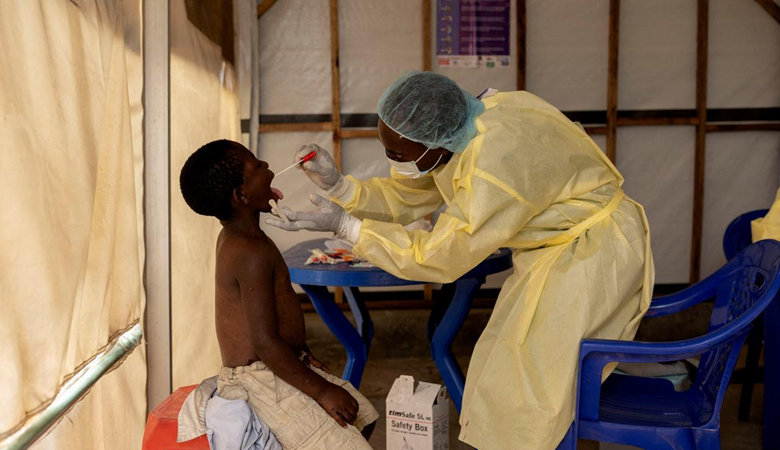Mpox Outbreak: Symptoms, Prevention, and WHO’s Global Health Emergency Declaration Explained

News Mania Desk/Agnibeena Ghosh/15th August 2024
The World Health Organization (WHO) recently declared Mpox, formerly known as Monkeypox, a global health emergency in response to the rising number of cases, particularly in Africa. This decision was made following a critical meeting of the UN health agency’s emergency committee, highlighting the growing concern over the disease’s spread and impact.
Mpox is a viral illness caused by the Monkeypox virus, which belongs to the genus Orthopoxvirus. This virus was first identified in 1958 after outbreaks of a “pox-like” disease were observed in monkeys, giving the virus its original name. For decades, most human cases were reported in central and West Africa, where individuals had close contact with infected animals. Mpox is related to smallpox, though it generally causes milder symptoms.
People infected with Mpox typically develop a rash that can appear on the hands, feet, chest, face, or mouth, and in some cases, near the genital areas. The rash progresses to pustules, which are large, pus-filled pimples that eventually scab over before healing. In addition to the rash, other symptoms include fever, headache, muscle aches, and swollen lymph nodes, as the body attempts to fight off the virus. Although Mpox can be severe and even fatal in rare cases, the vast majority of infections are not life-threatening.
A key concern with Mpox is its ability to spread from person to person. Transmission occurs through direct skin-to-skin contact, exposure to bodily fluids, respiratory secretions, or contaminated objects and surfaces. The virus can also be passed from a pregnant woman to her fetus or newborn during pregnancy and birth. Once an individual shows symptoms, they remain contagious until the rash has fully healed and new skin has formed.
The symptoms of Mpox generally appear within 21 days of exposure, with the incubation period ranging from three to 17 days. During this period, the infected person may feel well and show no symptoms, making it challenging to identify and contain the virus early on.
Vaccination is a crucial tool in preventing Mpox. Since the virus is closely related to smallpox, vaccines developed for smallpox are effective against Mpox as well. During the 2022 Mpox outbreak in various countries, the use of vaccines, treatments, and public health measures in wealthier nations helped curb the spread of the virus. Unfortunately, access to vaccines and treatments in Africa has been limited, exacerbating the region’s vulnerability to the disease.
The WHO’s declaration of Mpox as a global health emergency was driven by the alarming increase in cases, particularly in Africa. This year alone, more than 14,000 cases and 524 deaths have been reported in Africa, with 96% of fatalities occurring in the Democratic Republic of the Congo. The virus has also spread to neighboring countries like Rwanda, Burundi, Kenya, and Uganda, raising concerns about its potential to reach other continents.
Although the WHO has not classified Mpox as a pandemic, the measures implemented are intended to prevent it from escalating to that level. The international community is closely monitoring the situation, and efforts are underway to ensure that the necessary resources are mobilized to combat the spread of Mpox and protect public health.






